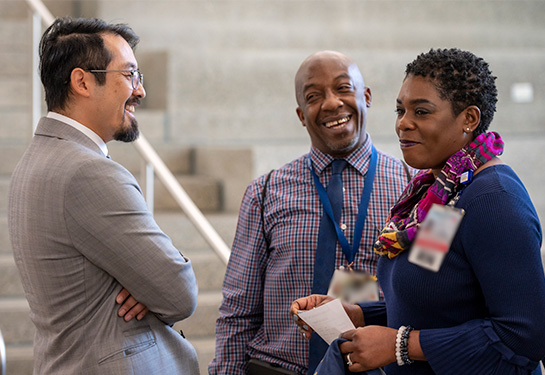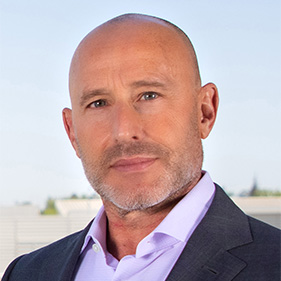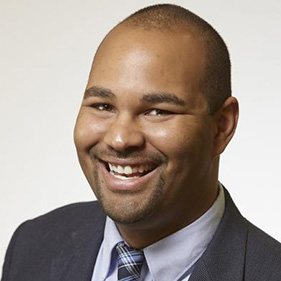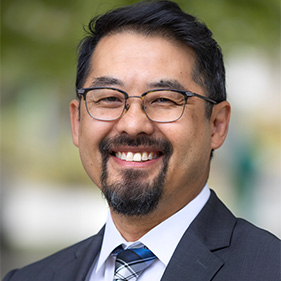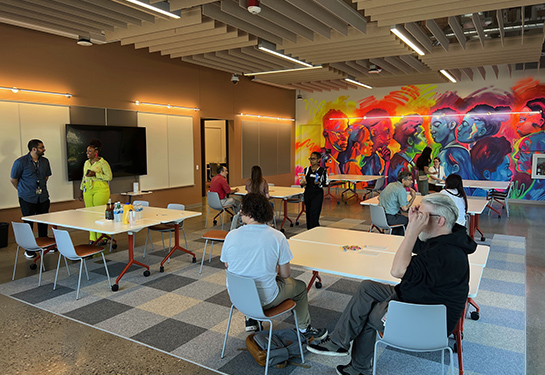UC Davis Health creates road map to diversify health care workforce
How can health care systems increase diversity and inclusion in their workforce?
UC Davis Health, recognized by Forbes as a "Best Employer in California", has developed a road map for increasing workforce diversity across the industry. While California banned the consideration of race or ethnicity in hiring at public institutions in 1996, UC Davis Health has since come up with a holistic outreach and local recruitment plan that has proven effective. And that approach is now receiving global attention through a new case study published in New England Journal of Medicine Catalyst’s January 2024 issue.
The case study provides a step-by-step guide for medical centers and institutions that seek to diversify their health care workforces. It presents some of UC Davis Health’s successful recruitment efforts as a community-anchored institution.
“Evidence shows that UC Davis Health continues to distinguish itself as a national leader in workplace diversity and health equity while training the next generation of health care providers and research innovators,” said David Lubarsky, chief executive officer and vice chancellor for human health sciences at UC Davis Health. Lubarksy is also a co-author on the paper. “Those trainees are our future. They see firsthand how DEI (diversity, equity and inclusion) enriches all patient care and they will become ambassadors for equity wherever they work.”
UC Davis Health has received many national awards for diversity, health equity and community engagement.
Those trainees are our future. They see firsthand how DEI enriches all patient care and will become ambassadors for equity wherever they work.” —David Lubarsky, CEO of UC Davis Health
Diversifying the workforce through locally anchored hiring strategy
Diversifying a workforce requires commitment from the executive leadership team and their direct reports at every hiring level. The objective is to create a workplace where everyone belongs.
For this reason, the UC Davis Health Talent Acquisition team within the Department of Human Resources has focused on cultivating a diverse and local workforce through strategic outreach efforts.
“Diversity, equity and inclusion are core tenets of our recruitment strategies,” said Lyndon Huling, interim lead for Talent Acquisition Unit and co-author of the case study. “We implement those values in our approach to outreach. We know that a diverse and local workforce cultivates innovation, improves patient outcomes and makes UC Davis Health an employer of choice.”
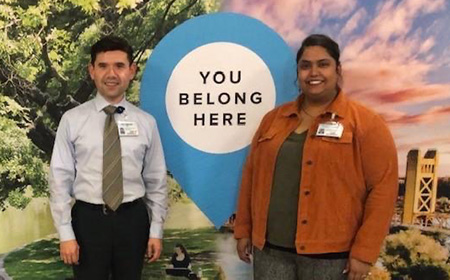
A 2019 Community Health Needs Assessment identified 10 ZIP codes within a 20-minute commute of UC Davis Medical Center in Sacramento with the greatest socioeconomic and health needs. In response, UC Davis Health pledged to hire and invest in the communities within these ZIP codes.
The Office for Health Equity, Diversity and Inclusion (HEDI) led this initiative and collaborated with human resources to prioritize local hiring from these neighborhoods. They initiated the Anchor Institution Mission (AIM) for community health. AIM represents UC Davis Health’s commitment to leverage its economic and human power to improve the local community’s health and well-being.
Diversity, equity and inclusion are core tenets of our recruitment strategies.” —Lyndon Huling, interim lead for talent acquisition
“We wanted to use our presence in the community to increase local hiring," said Victoria Ngo, co-first author of the case study and postdoctoral researcher at UC Davis Health. “Targeting outreach to local Sacramento neighborhoods of concern is just one way the anchor institution mission is focusing its efforts in reducing disparities in the long term.”
The AIM initiative draws upon the university’s ability and willingness to address complex problems like poverty through innovation, collaboration and community building.
“Tackling poverty and other social determinants of health is a daunting task. Yet, it is very near and dear to the heart and mission of UC Davis as a land grant and health care institution,” said co-first author Hendry Ton, associate vice chancellor for HEDI. He is also a clinical professor in the Department of Psychiatry and Behavioral Science at the UC Davis School of Medicine. “We are taking a vital step towards becoming an enduring community partner trusted for our commitment to the well-being of California's diverse communities. We hope this work inspires other organizations to do the same.”
Dedicated DEI leaders were involved in the design and implementation of outreach, recruitment, hiring and onboarding efforts for new employees from the AIM communities. The process included educating UC Davis Health leadership, managers and staff about the benefits of local hiring. Hiring new employees from these communities went from 12% in its pre-implementation year to 15% in the first year of implementation, then to 17% in its second year.
“Our AIM initiative generates meaningful connections between our local communities and our employee teams. This dynamic defines why UC Davis Health is a foundational pillar in Northern California and a trusted partner to many — especially those who have historically lacked access to care, education and employment,” Lubarsky added.
We are taking a vital step towards becoming an enduring community partner trusted for our commitment to the well-being of California's diverse communities.”—Hendry Ton, associate vice chancellor for health equity, diversity and inclusion
Future steps for UC Davis Health
UC Davis Health aims to employ 20% of its employees from AIM communities to meet the needs of tomorrow’s diverse communities. Achieving this goal requires mission-based, community-partnered hiring practices and further development of employee retention and advancement programs.
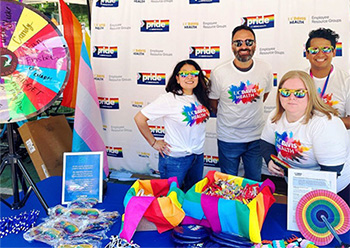
This means:
- Ongoing assessment and support for an inclusive work environment
- Programs that enhance a sense of belonging, particularly for underrepresented groups
- More career development and mentorship for entry-level employees
- More opportunities for staff to create and maintain meaningful connections with their local communities
“Significant work remains to be done, and we will meet this challenge,” Lubarsky said. “We are continuing to develop innovative ways to cultivate an inclusive environment for patients, employees and students.”
Case study: Using Social Determinants to Diversify the Health Care Workforce: UC Davis Health’s Playbook (2024) NEJM Catalyst Innovations in Care Delivery.
Read also: Attracting, Admitting, Supporting, and Graduating a Diverse Nursing Student Body (2024) NEJM Catalyst Innovations in Care Delivery

